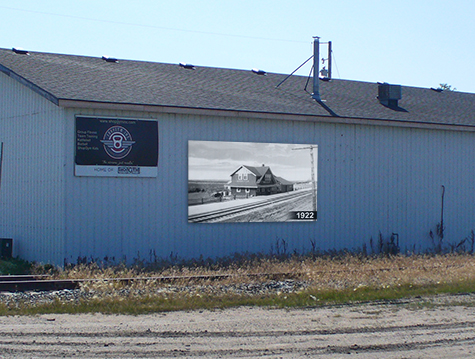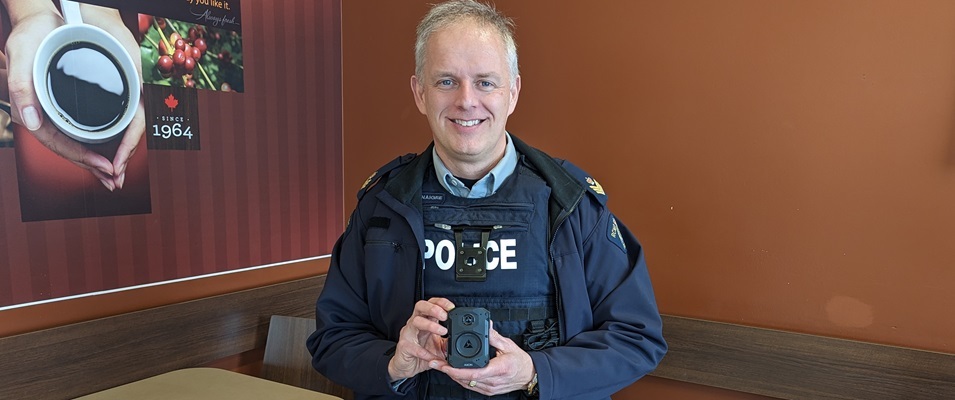
Niverville’s Communities in Bloom (CIB) committee has set a hectic pace this summer. Working in partnership with the Town of Niverville, local business owners, the Hanover School Division (HSD), Niverville Funeral Aid, and a few local churches, the committee has been actively working toward a more beautiful, visitor-friendly Niverville. Evidence of their hard work is blossoming all around the town.
The Heritage Gardens, located at the heart of the Heritage Centre’s outdoor campus, has been abuzz with landscaping and construction. With the design and planting complete, the next phase will include benches, lights, trees, and life celebration plaques throughout the gardens.
The committee has a variety of fundraising initiatives underway to fund these garden accoutrements. The committee was honoured to accept a generous donation from Perimeter Concrete towards the gardens.
The third stage will include the construction of a grain elevator replica to be used as a pavilion and historical focal point within the gardens.
While that project continues to unfold, plans for Main Street beautification are also in full swing.
“There are three projects that the Niverville CIB has proposed, with the intent to effect improvement and increase interest in the appearance of Main Street,” says Shirley Hoult, CIB committee member. “The HSD has provided support with the approval to place signage on the new elementary school fence along Main Street. The Niverville Funeral Aid, along with the United and Chortitzer Churches, have approved and support the recommendations for the improvement of the Niverville Heritage Cemetery.”
First, historical signage will appear along the railway tracks facing traffic approaching from the west, visible on the walls of Shop Gym and Artel Farms buildings consecutively. These large black-and-white graphics will commemorate pictures of the first grain elevator as well as Niverville’s early train station.
Installation of historical signage will follow along Main Street. These points of interest will be located along the fence bordering the elementary school. Six picture boards with text commentary will depict Niverville’s colourful history. Hoult says this concept is intended to build on the “Now and Then” project initiated by Niverville Collegiate students in 2016.
Finally, improvements will continue at the Niverville Heritage Cemetery.
“As part of our Main Street, we feel it is important that [the cemetery] reflect positively on the community,” says Hoult. “Part of that improvement will be the installation of memory boards with pictures and stories of persons resting in the cemetery.”
Hoult says these boards will create a remembrance wall around the existing poppy garden and cenotaph. Poppies will be included on the memory boards of persons who served in the Armed Forces. While the boards are still in the design and pricing phase, the committee expects that they will be ready for purchase by the end of August. The proposed size of each board is 16 inches by 12 inches.
“This will be a self-funded, not-for-profit project,” adds Hoult. “It will be quite amazing when completed.”
While new beautification ideas are always on the committee’s mind, the maintenance of Niverville’s buildings also takes a high priority for them.
“The Niverville CIB committee was concerned over the increase in graffiti around town and its effect on the community,” says Hoult. “Following some research into how other communities have dealt with this problem—in particular, New York City’s ‘Broken Window Theory’—we requested attendance at a council meeting to put forward some suggestions.”
The Broken Window Theory stemmed from the work of two criminologists who used broken windows as a metaphor for petty crime in neighbourhoods. They believed that when a neighbourhood, community, or city regularly monitors and quickly cleans up areas subjected to vandalism, this creates a perception of order and lawfulness, thereby curbing more serious crime.
The CIB committee proposed a partnership between the town, residents, and the Chamber of Commerce. They called it the Graffiti Patrol Initiative. Their hope is that residents will begin to report to town council on any new graffiti seen on public and private property. The recommendation to council was that they request residents and businesses remove the graffiti. If the request is not followed up in a timely manner, town staff would take care of it and submit an invoice to the property owner for services rendered.
“A number of businesses have responded very favourably and some graffiti has been removed,” Hoult says. “It’s a difficult issue to successfully respond to due to the time of activity and identification of persons responsible. The graffiti on the post office building is particularly offensive, and has been there for a considerable amount of time. [With it] being such a focal point in the community, it would be really good to see it removed.”
Town council responded to the committee by saying that the removal of graffiti will continue to be the responsibility of the property owner, since staff members are already taxed with regular community maintenance and upkeep. The town will likewise set an example by promptly removing graffiti placed on public buildings.
The CIB committee would like to see this initiative taken a step further, finding people willing to monitor areas of repeated graffiti occurrence, monitoring the sale of spray paint, and reporting graffiti activity to the RCMP. They are pleased with the town’s initiative to place surveillance cameras along Main Street and believe that it could play a part in curbing this crime.
“Our main purpose in bringing forward the proposals was to get some discussion on the topic and action taken,” says Hoult. “It’s our understanding that town council is continuing discussion with the Chamber on how best to deal with this issue.”



















